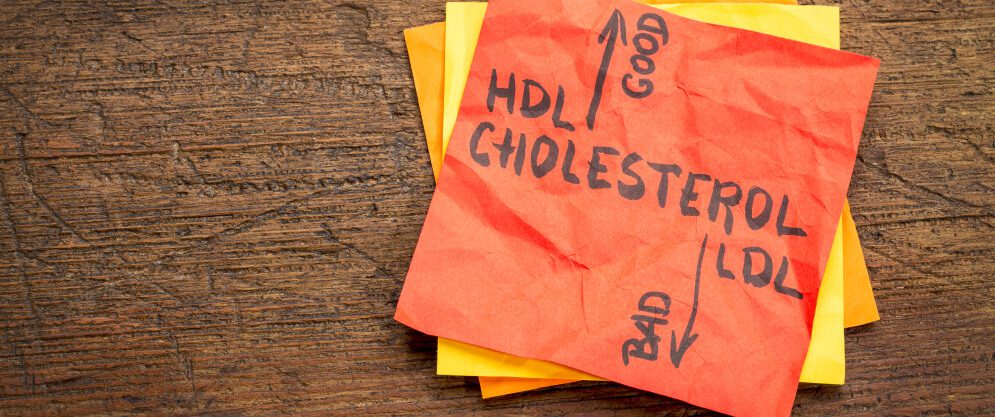Cholesterol
Home / Heart / Risk Factors / Cholesterol

Cholesterol
Having a high cholesterol level is one of the major risk factors for heart disease. Experts recommend that everyone over 40 should have their cholesterol tested every year. It is important to have healthy cholesterol levels – and there is no such thing as cholesterol being ‘a little bit high’. It is either high or, it is not. If your levels of cholesterol are higher than normal, you need to work to bring them down.
Cholesterol is a fatty substance found in our blood. If you put a lot of it together, it looks like white candle wax. Normally, cholesterol at healthy levels helps our bodies to make important hormones but if cholesterol gets too high, it can stick to arteries and blood vessels. This makes blood vessels narrower and it can be harder for our bodies to pump blood around our bodies. Eventually, the arteries can block altogether and this is when someone will have a heart attack or stroke.
When you have your cholesterol tested, your doctor will give you a ‘lipid’ or ‘fat’ profile. This profile represents the four elements of your cholesterol. Each element is linked to your risk of heart disease and stroke.
- Total cholesterol: This is the total amount of cholesterol in your blood at the time of the test. It includes both your ‘good’ and your ‘bad’ cholesterol levels.
- LDL (‘bad’) cholesterol: This is the amount of ‘bad’ cholesterol you have in your blood. LDL cholesterol is the type of cholesterol that lines and narrows arteries so it is very important to keep this at healthy levels.
- HDL (‘good’) cholesterol: This type of ‘good’ cholesterol is actually very good for you and will help to remove ‘bad’ cholesterol from your blood, so the higher you can get this one, the better. Exercise is one of the best ways of increasing your levels of good cholesterol.
- Triglycerides: These are fats that circulate in the blood stream with cholesterol. High levels of triglycerides are known to increase your risk of heart disease.
- Total cholesterol: Less than 5.0mmol/L
- LDL cholesterol: Less than 3.0mmol/L
- HDL cholesterol: More than 1mmol/L for men and more than 1.2mml/L for women
- Triglycerides: Less than 1.7mmol/L
If you have a history of heart disease, stroke or diabetes or, you are at high risk because of multiple risk factors, then your target levels for LDL cholesterol are lower:
- LDL cholesterol: 1.4-2.5mmol/L
Your cholesterol can be high for a number of reasons. High cholesterol can be genetic or due to an under-active thyroid, but in most cases, high cholesterol is due to eating too much saturated fat. Following a healthy diet and reducing saturated fat is one of the best ways to lower cholesterol.
- Diet – Reduce your intake of saturated and trans fat (butter, full fat dairy products, red meat and fatty cuts of meat, processed meat, biscuits, cakes, pastries, takeaways and ready-made meals). Replace saturated and trans fat with monounsaturated and polyunsaturated (omega-3) fats which can be found in fish oil, oily fish, dark green leafy vegetables, rapeseed oil, flaxseed/linseed and walnuts. These can lower your triglyceride levels and prevent blood clotting.
- Weight – Being overweight increases your cholesterol levels and risk of heart disease and stroke. Losing 10% of your body weight can allow for a 10% reduction in total cholesterol.
- Exercise – Aim for a minimum of 150 minutes of moderate intensity, aerobic activity per week. To achieve this easily, go for a brisk 30 minute walk 5 days per week. Exercise increases your HDL ‘good’ cholesterol and can reduce your triglyceride levels.
- Smoking – If you smoke, stop! Smoking lowers your levels of HDL ‘good’ cholesterol. See www.Quit.ie for more information.
- Alcohol – Excess alcohol consumption can increase your triglyceride levels and lead to weight gain.

